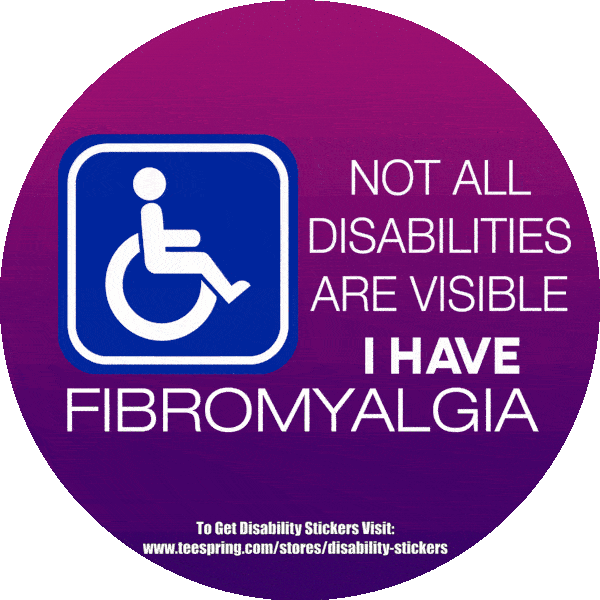How to Deal with People who say, “It’s all in your head”
When I meet with physicians and families about someone with chronic pain, the question I often hear is, “Does he or she really have pain?” The answer I always give is “yes—all pain is real.” A person’s experience of pain is unique to the individual, and it can’t be measured from the outside, with the exception of sophisticated brain mapping available with a functional MRI, which is only in a few laboratories across the country.
Since there’s really no way to know how much pain people are in except for what they tell you, my first inclination is to believe what my patients tell me.
Stigma associated with having a chronic disease
We know that in addition to suffering the actual pain, fatigue, and fog of fibromyalgia, many patients also suffer from the stigma associated with having a chronic disease. We asked our readers for some of the more hateful examples of what people say to them. Be warned, some of this stuff is just heartbreaking. But it’s important that we bring this into the light.
Lynne Kennedy Matallana was long dismissed for her chronic fibromyalgia symptoms.
Lynne Kennedy Matallana was long dismissed for her chronic fibromyalgia symptoms. It took her two years and 37 doctors before finding one doctor who believed in her and who committed to help her. Before that, she spent a lot of time in bed suffering from a number of symptoms.
Though this was in the mid ’90s, there are still people who go from doctor to doctor before finding someone who can connect the dots to their symptoms. Not long after her diagnosis, Matallana cofounded the National Fibromyalgia Association (NFA), a nonprofit devoted to helping people with chronic pain.
Pain Experienced as Emotion
When I ask patients about their pain, eight out of ten words they use to describe their experience are emotional. The three most frequently used terms are anxiety, fear, and anger, but there’s also depression, helplessness, loss of purpose, frustration, guilt, and shame.
Click Here to Visit Fibromyalgia Store
Pain is protective, and when we feel pain, we experience a set of aversive emotions so that we attempt to move away from whatever is causing it. That’s how we’re circuited. So it’s logical that we would have an emotional response to pain. “As pain becomes chronic, the sensory components become less important and the emotional and behavioral components tend to take on more importance,” says Jodie Ann Trafton, director of the Veterans Administration Palo Alt Health Care Systems Program Evaluation and Resource center in California.
“This is because of learning. Having pain is a strong emotional experience. It will reshape your behavior. It will reshape how you interact with the world. And that in itself means your brain is going to respond differently over time.
Even doctors didn’t believe
For many people with fibromyalgia, there is a path to diagnosis that begins with shuffling from doctor to doctor, looking for an explanation for pain symptoms that cannot be diagnosed with X-rays, blood tests or any other test—all the while pushing past the naysayers who believe symptoms are imagined or exaggerated.
Every individual has a unique experience of pain
I believe that one of the most important things people with chronic pain can do to help themselves is to notice what they are feeling. Every individual has a unique experience of pain, but in this discussion I focus on some of the universal elements. Especially in our culture, where we resist pain and want to move away from it at all cost, we create a vicious cycle where our attempts to move away from the pain actually intensify the pain.
The fight to tighten up in response to a painful experience or be angry that it hurts makes the pain worse. By accepting and investigating the emotions we experience with chronic pain with curiosity, rather than judgment, we can achieve substantial improvements in our well-being. Emotions are as real as the pain that causes them, and I firmly believe that if people with chronic pain don’t deal with their emotions about their pain, they will never get better.
More is known about fibromyalgia today
Fortunately, more is known about fibromyalgia today, and the condition is very much recognized as real. The Food and Drug Administration has three drugs approved specifically for the condition. Researchers are actively studying fibromyalgia in clinical trials all around the country and world.
Even insurance companies and medical professionals finally have a specific code for the condition in the International Classification of Diseases, 10th Revision (ICD-10). In the past, fibromyalgia was coded as unspecified myalgia and myositis (729.1). But in the past year, the condition received its very own code.
Chronic pain is strongly influenced by emotions
Based on studies conducted earlier this year and published in the journal Nature Neuroscience, we now have conclusive evidence that the experience of chronic pain is strongly influenced by emotions. The emotional state of the brain can explain why different individuals do not respond the same way to similar injuries.
It was possible to predict with 85 percent accuracy whether an individual (out of a group of forty volunteers who each received four brain scans over the course of one year) would go on to develop chronic pain after an injury, or not. These results echo other data and studies in the psychological and medical literature that confirm that changing one’s attitudes, one’s emotions toward pain decreases the pain.
Lets put this awareness sticker on our cars
– Click Here to get Yours Fibromyalgia Disability Sticker for you Car
For support and discussion join our friendly Facebook community “Living with Fibromyalgia and Chronic Illness”, Click Here to Join
References:
- Fibromyalgia Victim Blaming: How to Deal with People who say, “It’s all in your head” by
- Fibromyalgia is recognized as an official disease in ICD listing via Fibromyalgia Resources
Also Read:



